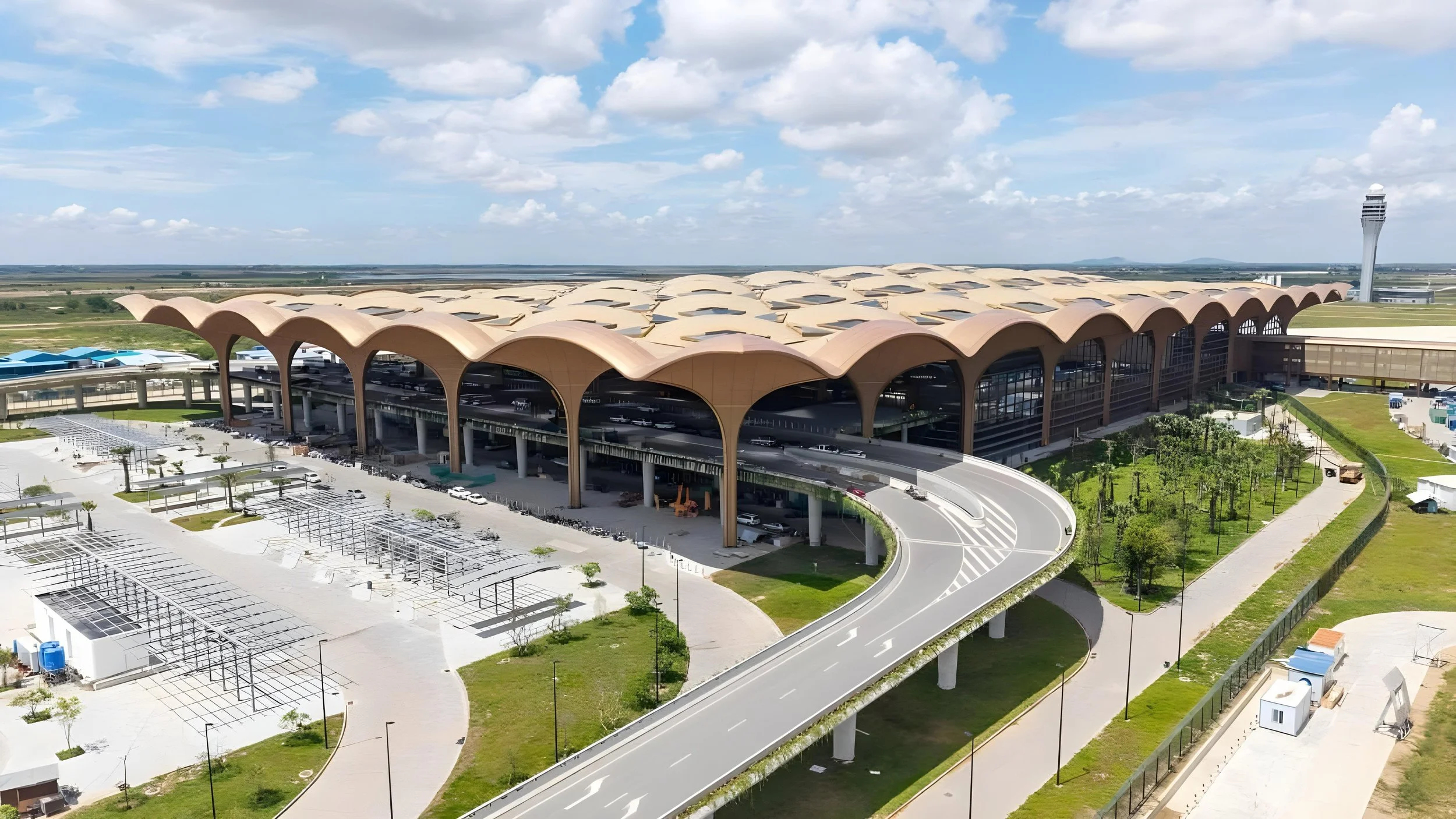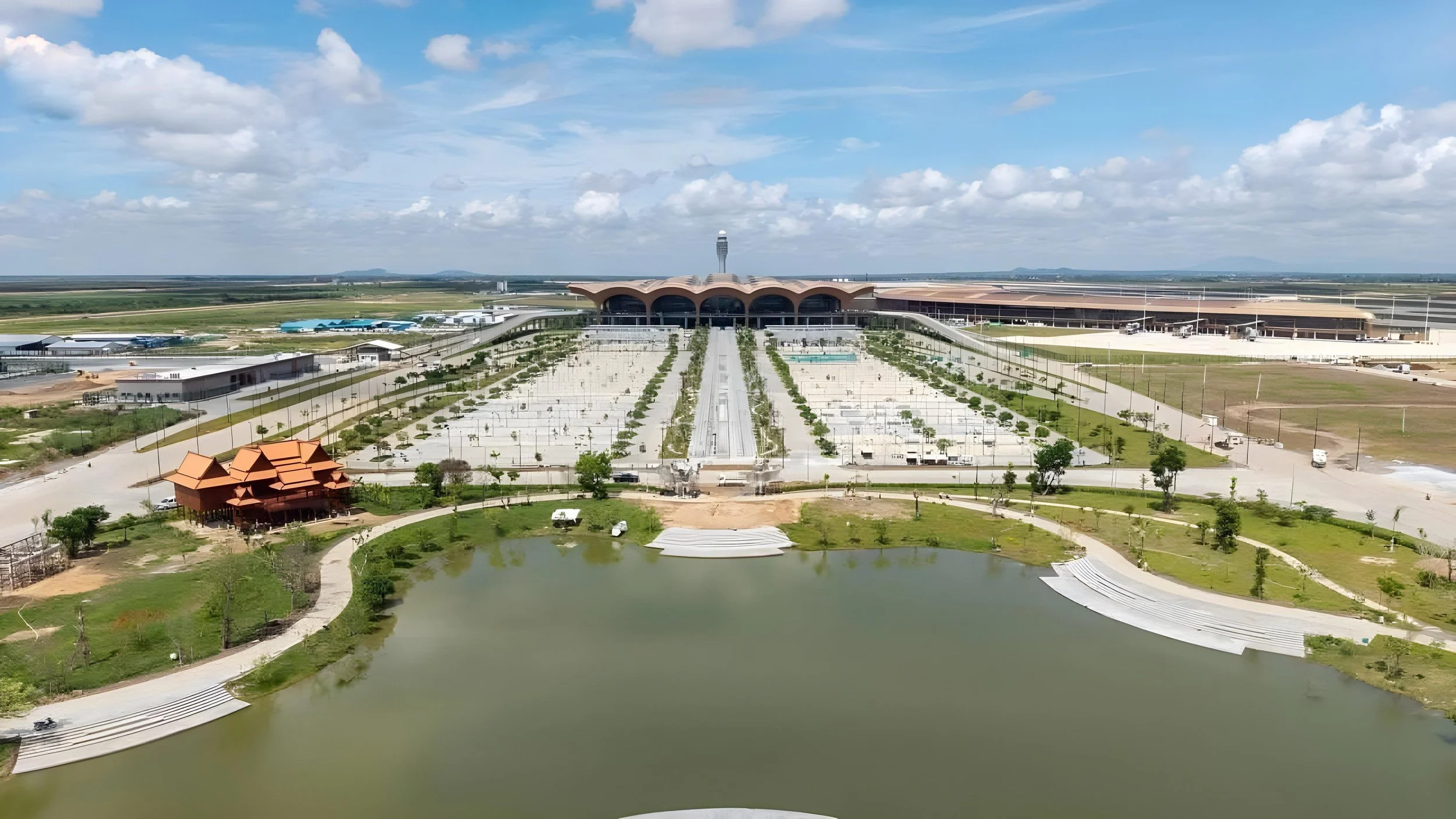How Techo International Airport is Fueling Cambodia's Real Estate Market
Cambodia is entering a transformative era of growth, and at the heart of this change stands the Techo International Airport (TIA). Set to become the 9th largest airports in the World, this mega-infrastructure project goes far beyond aviation—it is reshaping Cambodia’s real estate landscape. From driving property values to decentralizing urban growth, TIA is laying the foundation for the country’s next investment frontier.
1. Improved Accessibility and Connectivity
Strategically located in Kandal province, the Techo International Airport will enhance Cambodia’s global and regional accessibility. With capacity to handle over 30 million passengers annually, TIA positions Phnom Penh as a major transit point. This improved connectivity is expected to:
Attract more foreign direct investment (FDI).
Stimulate tourism growth, creating demand for hotels, serviced apartments, and rental housing.
Increase the appeal of satellite cities and suburban developments, as commuting times shorten.
As a result, land values and residential projects around the airport corridor are already witnessing rising interest.
2. Rising Demand for Residential and Commercial Developments
The influx of travelers, expatriates, and businesses will drive demand for mixed-use projects, office spaces, and condominiums. Developers are strategically positioning new projects along the airport highway and within surrounding provinces. For investors, this presents opportunities to capitalize on:
Condominiums, hotels and gated communities tailored for professionals,workers and expatriates.
Retail and logistics hubs serving the growing airport economy.
Hospitality developments targeting transit passengers and tourists.
The airport is therefore not just fueling residential demand but also boosting Cambodia’s commercial real estate outlook.
3. Acceleration of Urban Expansion and Infrastructure Growth
Phnom Penh has traditionally been the center of Cambodia’s real estate market. However, the construction of TIA is accelerating the shift toward urban decentralization. Areas like Kandal and Takeo are emerging as new investment frontiers, supported by expanding road networks and utilities. This mirrors trends seen in other regional markets, where airports drive long-term real estate appreciation and the birth of secondary cities.
4. Positive Outlook for Long-Term Investors
While short-term speculation is expected, the real estate opportunities around TIA are fundamentally long-term investments. Property appreciation is likely to be sustained by:
Continued economic growth and Cambodia’s strategic location in ASEAN.
Increased demand for modern housing and commercial spaces.
Infrastructure projects supporting connectivity to Phnom Penh and beyond.
Savvy investors who enter early stand to benefit the most from the “airport economy” effect—a global phenomenon where major airports become magnets for real estate growth.
The Techo International Airport is more than a national infrastructure project; it is a transformative force reshaping Cambodia’s real estate landscape. From driving suburban expansion to attracting international businesses, TIA is positioning Cambodia as a competitive destination in Southeast Asia’s property market. For developers, investors, and homebuyers, the message is clear: follow the flight path, and you’ll find the future of Cambodia’s real estate sector.
Looking for your desired property in Phnom Penh?


